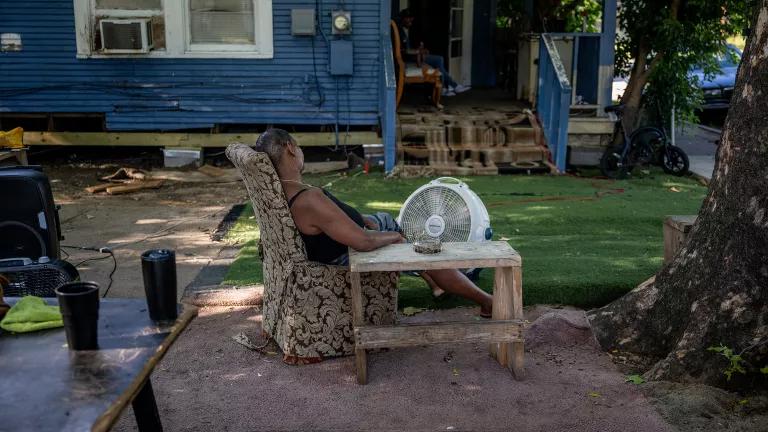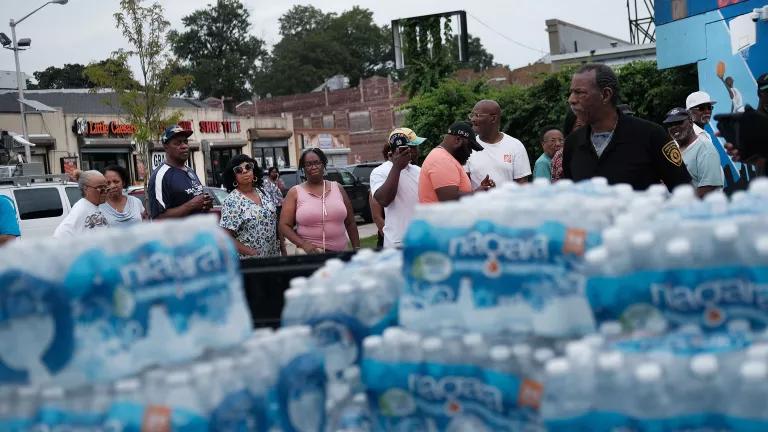
As a lawyer for the past 30 years, I’ve worked with a lot of laws. None is as eloquent as NEPA—the National Environmental Policy Act. Few are as short. Few are as broad. Few are as misunderstood.
When I first read NEPA’s text as a student, the words offered me hope. NEPA spoke of the nation’s commitment “to create and maintain conditions under which man and nature can exist in productive harmony, and fulfill the social, economic, and other requirements of present and future generations of Americans.” This is what I went to law school looking for: a vision of a world built on respect—for animals, for land and for each other. NEPA provided a vision and a path to get there.
A Twisted Path
Recently I went to Atlanta for a citizen NEPA workshop. I arrived stretched thin, low on sleep and nervous. I came to speak about my experience bringing NEPA lawsuits, but also to listen. This was my ninth time doing this. I had helped convene a citizen NEPA workshop each year in a different part of the country. Litigation was what I knew, but it was just a small part of each workshop. The workshops were about sharing NEPA’s power. Most people haven’t heard of NEPA, let alone what it can do for them. The law gives people a voice in government decisions that affect them. By requiring public input, an analysis of impacts and a consideration of alternatives to a proposed government decision, NEPA provides a mechanism to understand each other’s interests and find solutions that balance those interests. Our fractured world needs such solutions even more now than when President Nixon signed NEPA into law in 1970.
My real learning started once my school days were over. Thirty years of practice taught me the work it takes to fulfill NEPA’s promise. But I’m falling short and so is the nation. As I go to work each day in our nation’s capital, people with different interests retreat to corners rather than come to the middle to talk. I spend most of my time fighting. Fighting was fun when I was young. It’s still fun now and then—at least when I win. But it is not the harmony NEPA promises.
I’d named a workshop session I was responsible for leading in Atlanta boldly—“Using NEPA to Further Justice.” I knew the potential was there, but the answers were not obvious. It was going to take a melding of the lived experience and book learning represented in the room. I was taking a risk. If it worked, it would be great. If it didn’t, people would wonder why I had wasted their time.
The session went ok. But I wanted more. I wanted to unleash the powerful voices in the room, but didn’t know how to tap into them. The next morning, I woke up early to walk to the meeting place. The sun offered warmth; the leaves whispered in a light breeze. As I walked, I picked up a stick. Perhaps it would deliver what I was looking for. When I arrived at the door, I wasn’t ready to go in. Instead, I invited everyone outside. We stood in a circle. I passed the stick to my right. Quietly I said, “You may speak or you may pass the talking stick along.”
At first there was more passing than talking. But soon someone spoke. A young black woman valued the information provided the previous day, but treasured the people she met more. A Native American elder shared the support she had received from another participant. The circle felt safe. The voices came from deep within. Each building on the previous ones. Someone recalled Martin Luther King’s book and question—Chaos or Community: Where Do We Go from Here? A young man thanked his friend for inviting him to come. We created community.
I felt light, even buoyant as we returned to the meeting room. This was the vision NEPA promised. The energy in the space had changed. Everyone had become instructors. Charlette, a workshop participant who had mentioned a mapping tool developed by the U.S. Environmental Protection Agency on the first day, volunteered to pull it up on the screen and show others how to use it. Her eyes lit up as she shared the power she felt in the data at her fingertips. Drawing a polygon around an area in North Carolina, she pulled up census data (including race, age and income) as well as sources of pollution. Community advocates could submit this data as part of analysis required by NEPA for federal approval of a proposed interstate gas pipeline. My colleague Montina stood taller, her body charged as she spoke of collaborating with black and Native Americans who would suffer the brunt of the harm from Dominion Energy’s proposed Atlantic Coast pipeline. She had used NEPA to give a voice to those who have traditionally not been heard.
More than Bees and Bunnies
Charlette, Montina and others at the workshop realized that NEPA was about them and the lives and communities they were working to improve. NEPA speaks of the “human environment.” It requires our government to analyze the impacts of its proposed decisions on each of us – on our health and economic well-being, as well as on our natural surroundings.
NEPA’s mandate is clear: “it is the continuing responsibility of the Federal Government” to “[a]ssure for all Americans safe, healthful, productive, and aesthetically and culturally pleasing surroundings.” This is great stuff! The “E” in NEPA may stand for “environmental,” but it is really about equity—a promise to each of us of what we need in our environment to thrive. Who wouldn’t want this?
Yet, all the talk of NEPA around me now in Washington is about getting rid of it. Members of Congress have proposed excluding oil and gas drilling, pipelines and logging on public lands from public input. The Council on Environmental Quality—the office within the White House responsible for helping federal agencies fulfill NEPA’s mandate—seems more interested in giving them a pass. At a time when the public wants to know more about how the Forest Service is managing fire risk, the agency has reduced public information and input. Rather than balancing needs across the lands it manages, the Department of the Interior has accelerated the extraction of fossil fuels by curtailing environmental review.
Such proposals contradict NEPA’s mandate. They drive us further apart, rather than bring us together. There is no salvation in isolation. In a society such as ours of multiple interests and multiple identities, no group can make it alone. NEPA isn’t about my agenda or your agenda. It is about solutions that work for all of us. We do well ourselves by taking care of others. This is the wisdom that Martin Luther King offered when he posed the choice between Chaos or Community. This is the power I saw in NEPA when I first read it as a law student. I choose community.
And community is what I found in Atlanta last week. As the workshop ended, I hesitated. Others did too. No one wanted to leave. From the back of the room, Gary suggested we take a group photo. He had been quiet over the two days. Older than most in the room, you could see the weight of past battles for justice on his shoulders. Yet, he stood tall. I drew strength from Gary’s presence. Gary’s request to memorialize the conversation honored the presence of our community. We left with a photo on our phone and the warmth of connection in our hearts.




